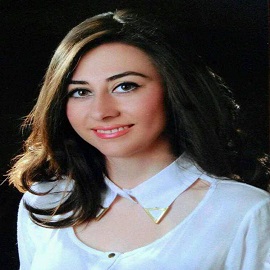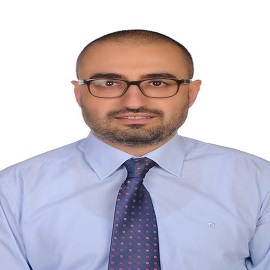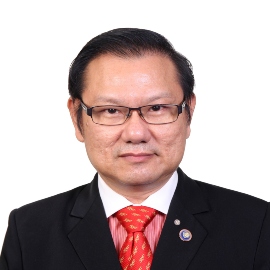Agenda
Conference Schedule
Day 1 full schedule
August 23, 2022 @ -

Safi Khuri
SurgeonRambam Health Care Campus, Haifa
Israel
ABSTRACT
One of the critical steps during the Pancreato-duodenectomy (PD) procedure lies in identifying the complicated vascular anatomy of the resected area. The blood supply is usually branches of the celiac and superior mesenteric arteries. Only in 55%-79% of the surgeries, the anatomy of the blood vessels encountered by the surgeon is normal, while in the remaining cases there are vascular, especially arterial, variations that make surgery difficult. Any change or deviation from the known surgical course of PD makes surgery difficult and can result in an increase in intra/postoperative complications. In order to reduce difficulties encountered during PD, as well as reducing complication rates and improving surgical outcomes, a preliminary design, which includes preoperative identification of anatomical variations, is needed. The most accurate and accessible tool for identifying such variations being Computed Tomographic Angiography (CTA).
Objective: The aim of this retrospective study is to assess the prevalence of vascular anomalies encountered during PD and examine whether there is an association between these anomalies and intra/postoperative morbidity and mortality.
Methods: A retrospective study over 5 years was performed at the HPB and Surgical Oncology Unit, Rambam Health Care Campus, Haifa, Israel. The charts of all patients submitted to PD were reviewed, and all patients with Vascular anomalies were included. The type of anatomical variant, as well as other information, were collected. For statistical purposes, the group of patients with vascular anomalies was compared to a control group with identical demographic characteristics. A statistical analysis on the possible association between vascular anomalies and intra/postoperative complications (mainly bleeding) was performed.
Results: During the aforementioned period, 202 patients underwent PD, and in 41 (20.3%) vascular anomaly was identified. The majority of these patients (32/41) had a single anatomical variant, where two and three anatomical variants were identified in 7 and 2 patients, respectively. The most common vascular anomaly was Replaced Right Hepatic Artery, noticed in 34 patients (83%). The most common indication for PD for both groups (anatomical variant and control group) was pancreas adenocarcinoma (56%). Intraoperative complications, in the form of bleeding, developed in 6/41 patients (14.6%) of the anatomical variant group and none in the control group. Postoperative complication rates, including Post pancreatoduodenectomy Hemorrhage (PPH), pancreatic fistula (PF), intra-abdominal abscess, and wound infection were almost identical for both groups. One case of death within 30 days occurred, and it was in the anatomical variant group.
Conclusions: Anatomical Vascular anomalies are a common variant encountered during PD, with RRHA being the most common. Although postoperative morbidity and mortality is not affected by the presence of these anomalies, the intra-operative bleeding rate is higher in this specific group, thus; a pre-operative diagnosis by means of CTA is mandatory.
The Importance of the Diet, Correction of Energy Imbalances and Chakras Energy Replacement for Prevention the Exchange of Encapsulated Breast Prosthesis

Huang Wei Ling
AcupuncturistMedical Acupuncture and Pain Management Clinic
Brazil
ABSTRACT
Introduction: Breast augmentation is one of the most commonly performed cosmetic procedures. Capsular contracture is the most common complication. The incidence of capsular contracture ranges from 3-19%. Although associated pain rarely dominates patient concerns, aesthetic morbidity that includes firmness, implant malposition, and asymmetry is a strong driver for surgical intervention.
Purpose: To demonstrate that the formation of capsular contracture post breast prosthesis could be related to energy imbalances and chakras energies deficiencies due to wrong eating habits and the correction of these energies imbalances, taking out the Heat retention and replenishment of the energies of the chakras meridians are an important tool to prevent the exchange of this encapsulated breast prosthesis.
Methods: In one case report, V.R.F.P., a 46-year-old female patient, did breast prosthesis in both breasts. One year later she began to feel pain in the right breast and she felt that was stiffening. The recommendation of the surgical doctor was that need replace to a new breast prosthesis. The patient search for another kind of treatment to prevent a new surgical procedure. The second physician did Chinese dietary counseling, auricular acupuncture with apex ear bloodletting, systemic acupuncture, and replenishment of all her chakras that were in the lowest level, with highly diluted medications according to Constitutional Homeopathy of Five Elements based on Traditional Chinese Medicine, after submitted the measurement of the energy of the chakras by the radiesthesia procedure.
Results: The patient had completely cured of her symptoms after this Chinese treatment and doesn’t need to change the breast prosthesis anymore.
Conclusion: To prevent the exchange of encapsulated breast prosthesis, the patient should be treated in a holistic way, looking at the dietary aspects and rebalancing and replenishing the chakras energy meridians through highly diluted medications to prevent the formation of the inflammatory process in the energy point of view that is forming the encapsulation in the breast prosthesis.

Huang Wei Ling
AcupuncturistMedical Acupuncture and Pain Management Clinic
Brazil
ABSTRACT
Introduction: Hemorrhoids are swollen veins in the anus and lower rectum. In traditional Chinese medicine (TCM), hemorrhoids can result from Yin, Yang, Qi and Blood disharmonies and Heat Retention.
Purpose: To demonstrate that hemorrhoids has energies alterations as the root and correcting it without any surgical procedure is possible.
Methods: Two case reports: the first, 42-year-old man had hemorrhoid after an anal fissure surgery. The patient did not intend to undergo another surgical procedure. The patient sought acupuncture treatment for leg pain. He received Chinese dietary counselling, auricular acupuncture/apex-ear bloodletting and the ear’s rectum point and systemic acupuncture. The second patient was a 38-year-old man treating vitiligo with acupuncture when suddenly started to present hemorrhoids as well, for his work included driving cars a lot. Besides the same treatment of the case report one, still the patient complained of no improvement. Then a radiesthesia procedure was made to measure the patient’s chakras energy. All chakras rated 1 out of 8, except for the seventh chakra (normal). The patients were medicated with crystal-based medication and homeopathy according to the Constitutional Homeopathy of the Five Elements based on Traditional Chinese Medicine, created by the author.
Results: Case one reported a complete recovery of his hemorrhoids symptoms after the first acupuncture session. The second patient, only had improvement after beginning the replenishment of the energy’s chakras.
Conclusion: Hemorrhoids has an energy alteration as root and treating these energy imbalances and chakra’s energy deficiencies is essential for recovery without any surgical procedure.

Talar Vartanoglu Aktokmakyan
General SurgeonIstanbul Bagcilar Training And Research Hospital
Turkey
ABSTRACT
Aim: Perianal fistulas are common medical and surgical problems, resulting in an abnormal tract between the anorectal canal and the perianal skin. Treatment of anal fistula is challenging, often requiring multiple operations due to a high failure rate. Endorectal Advancement Flap(ERAF)carries the advantages of no sphincter division, no contour defect to the anal canal, and no perineal wound. Our aim was to determine the success of ERAF in treating perianal fistulas in patients and evaluate the outcomes of this procedure.
Methods: A retrospective review was conducted of 63patients who underwent ERAF at a tertiary hospital between2016-2019.Recurrence included reappearance of fistula after wound healing or presence of an abscess/chronic suppuration in the operated area at follow-up. The main outcome measures were postoperative persistent or recurrent fistula, clinical healing, and incontinence following the technic.
Results: ERAF was performed in 63fistula patients with an average follow-up of 13,8days.There were no significant differences in patient demographics. The percentage of women was 58,7% and the range of mean ages was 44,6[32–52years].30of the patients had comorbidities and the mean BMI was 28.2 kg/m2(19.4-56.5). (Table1)Of these patients, 43had fistulas of cryptoglandular origin,3had Crohn's fistulas, and 2had radiation therapy, and in 17patients the underlying etiology was unknown.8%of patients were diabetics, and 17%were smokers.54%of patients had undergone prior attempts at repair. (Table2,3)
Overall healing rate was 82%(53of65 flaps).Flap healing rate was lower in diabetics than non-diabetics(40%vs.85%,p=0.04).Healing rates were similar in age>60years vs.<60(75%vs.82%,p=o.63), males vs.females(81%vs.82%,p=1.0),BMI>30 vs<30 (82%vs81%,p=1.0), smokers vs.nonsmokers(73%vs.91%,p=0.41), in patients with seton <12weeks vs.>12(81%vs94%,p=0.40),or patients with prior fistula surgery vs. non(74% vs.88%,p=0.20).Recurrence developed in 4(6,3%)cases.Anal continence was normal in 6,3%of patients before surgery,11,1% at the end of follow-up.Of 12failures, 7/12(58%) healed with redo-ERAF, LIFT,or gracillis-flap.The remaining 5patients were managed with seton (3out12) or with ostomy(2out12).
Conclusion: This study demonstrates several factors that may improve fistula closure.ERAF for complex anorectal fistulas is associated with a high success rate and low incontinence rate.

Nadir Adnan Hacim
General SurgeonIstanbul Bagcilar Training And Research Hospital
Turkey
ABSTRACT
Aim: Perianal fistulas are common medical and surgical problems, resulting in an abnormal tract between the anorectal canal and the perianal skin. Treatment of anal fistula is challenging, often requiring multiple operations due to a high failure rate. Endorectal Advancement Flap(ERAF)carries the advantages of no sphincter division, no contour defect to the anal canal, and no perineal wound. Our aim was to determine the success of ERAF in treating perianal fistulas in patients and evaluate the outcomes of this procedure.
Methods: A retrospective review was conducted of 63patients who underwent ERAF at a tertiary hospital between2016-2019.Recurrence included reappearance of fistula after wound healing or presence of an abscess/chronic suppuration in the operated area at follow-up. The main outcome measures were postoperative persistent or recurrent fistula, clinical healing, and incontinence following the technic.
Results: ERAF was performed in 63fistula patients with an average follow-up of 13,8days.There were no significant differences in patient demographics. The percentage of women was 58,7% and the range of mean ages was 44,6[32–52years].30of the patients had comorbidities and the mean BMI was 28.2 kg/m2(19.4-56.5). (Table1)Of these patients, 43had fistulas of cryptoglandular origin,3had Crohn's fistulas, and 2had radiation therapy, and in 17patients the underlying etiology was unknown.8%of patients were diabetics, and 17%were smokers.54%of patients had undergone prior attempts at repair. (Table2,3)
Overall healing rate was 82%(53of65 flaps).Flap healing rate was lower in diabetics than non-diabetics(40%vs.85%,p=0.04).Healing rates were similar in age>60years vs.<60(75%vs.82%,p=o.63), males vs.females(81%vs.82%,p=1.0),BMI>30 vs<30 (82%vs81%,p=1.0), smokers vs.nonsmokers(73%vs.91%,p=0.41), in patients with seton <12weeks vs.>12(81%vs94%,p=0.40),or patients with prior fistula surgery vs. non(74% vs.88%,p=0.20).Recurrence developed in 4(6,3%)cases.Anal continence was normal in 6,3%of patients before surgery,11,1% at the end of follow-up.Of 12failures, 7/12(58%) healed with redo-ERAF, LIFT,or gracillis-flap.The remaining 5patients were managed with seton (3out12) or with ostomy(2out12).
Conclusion: This study demonstrates several factors that may improve fistula closure.ERAF for complex anorectal fistulas is associated with a high success rate and low incontinence rate.

Ling Sien Ngan
Founder, Chairman & Consultant in Aesthetic SurgeryFounder, Chairman & Consultant in Aesthetic Surgery
Malaysia
ABSTRACT
Statement of the Problem: The use of a wide array of chemical peel agents for rejuvenation of wrinkle, pigmentary disorder, acneiform eruption, and pre-malignant epidermal neoplasm had been for a long. Due to a lot of complications, downtime, variable healing rate after different chemical peeling, it is necessary to have a well-defined standard practice protocol for a consistently safe and predictable result. It is thus necessary to understand fully the step-by-step guide of different categories of peel agents, to avoid confusion, for safe and effective practice.
Methodology & Theoretical Orientation:
Systematic review studies are used to search for “various ingredients names”, including all commercially available prescription-based products. through databases of Cochrane Library, Medline, PubMed, SCOPUS, and Google Scholar. The author also utilizing a commonly used qualitative analysis other than reviewing the literature, also used clinical history taking, interview & observation over the social event, and forming a focus group to gather data. Using the security framework & lenses of analysis of the social science/behavior to understand what are the patient inclination, social behavior, and preferences, its performance, relevance, functionality & efficiency, if it can be optimized for as many a chemical peel agents to treat four conditions stated in the conclusion section.
Finding:
A chemical peel is the 3rd most commonly performed non-invasive cosmetic procedure in the USA with 1.3 million done in 2016. There has been a paradigm shift with laser largely supplanting more risky deep peel. Despite this, the superficial peel has proliferated in popularity & product diversity. When used for an appropriate indication with proper technique, nearly all peeling agents have demonstrated excellent clinical efficacy. And, they remain an indispensable cost-effective tool in the dermatologist’s aesthetic toolbox.
Conclusion & Significance:
Available literature reveals 1) chemical peels are the 3rd most commonly performed non-invasive cosmetic procedure in the US, > 1.8 M in 2016. 2) Indications for treatment are 4 broad categories: photo- & chronoaging; acneiform eruptions; depigmentation; and pre-malignant epidermal neoplasia, 3) peeling agent selection is determined by treatment indication, desired depth of ablation, pertinent examination findings, Fitzpatrick skin-type, and any other relevant dermatological history, 4) for the right indication with proper technique, all peel solutions & ablation depth have demonstrated excellent success in improving skin tone & texture, and cost-effective versus any invasive procedures. 5) hence, peels should remain an indispensable tool in Dr’s aesthetic toolbox.



